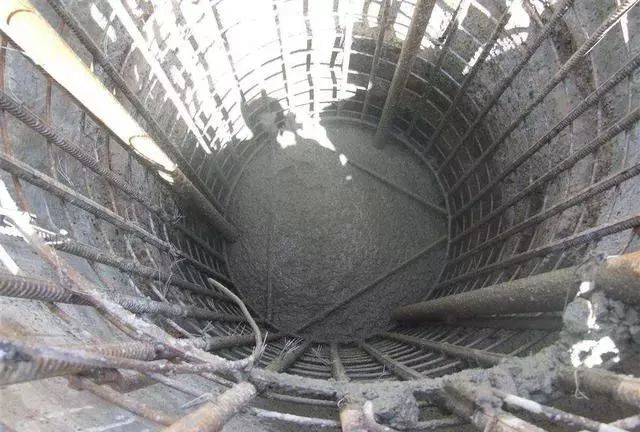【Excerpt】What to do with a broken pile
Browse services
- Petroleum and Gas
- 【Excerpt】High pressure jet grouting construction technology
- 【Excerpt】How to construct slope anchor cable?
- HDL-60S multi-function drilling rig shipped to Singapore
- 【Excerpt】Why do we need to test piles before pile foundation construction?
- We are the one-stop construction problem solver
- 【Holiday arrangement】Dragon Boat Festival
- 【Excerpt】The "Seven-Character Guideline" for Ground Treatment: A Comprehensive Interpretation!
- 【Excerpt】What is the difference between cement mixing pile and high pressure jet pile?
- 【Construction Case】HDL-200C top drive drilling rig for water stopper curtain of overseas dam
- 【Excerpt】What to do with a broken pile
- Holiday arrangement
- Our Drilling Rig: Client Success Story
Ⅰ. Common treatment methods for broken piles
1. In-situ pile restoration
For the broken piles found in time during the construction process and detected by ultrasonic testing, a new pile should be poured in situ after thorough cleaning to achieve a thorough treatment. This method is effective, difficult, long-term and costly, so it can be selected according to the importance of the project, geological conditions, number of defects and other factors.
2. pile extension
To ensure the quality of the project, stop pouring concrete and remove the conduit in advance. Determine the pile connection plan: first, conduct acoustic testing on the piles to identify the concrete location; second, based on the geological data provided by the design, determine the well point dewatering and excavation, followed by pouring 20# plain concrete for the retaining wall, which is reinforced with steel hoops inside. Third, dig to the required depth, roughen the surface manually, and then pour concrete using the bored hole method.
3. Pile core drilling method
This method is easier said than done. It involves simultaneously lowering water and using a pneumatic chisel to drill a well with a diameter of 80cm at the center of the defective pile, with the depth exceeding the defect area. Then, the mud and sand are sealed, a rebar cage is placed, and expansive concrete is poured using the bored concrete construction method. This method has a slow daily progress rate. If individual piles have poor water treatment or cannot be lowered sufficiently, it becomes extremely difficult, leading to significant losses in quality, schedule, and economy.
4. Combined method of supplementary delivery
When driving piles using segmented connections and sinking them one by one, poor connections may lead to disconnection at the joints. In such cases, the method of combining driving and reinforcing can be used. First, re-drive the questionable piles to ensure they settle and tighten any loose joints, thereby providing a certain level of vertical load-bearing capacity. Second, appropriately add full-length complete piles to compensate for any deficiencies in the overall foundation's vertical load-bearing capacity. Additionally, these newly driven complete piles can withstand seismic loads.
5. Correction method
The pile body is tilted but not broken, and the pile length is short, or the pile body is tilted due to the excavation of the foundation pit but not broken, so the local excavation can be used to correct the deviation and reset the pile with a jack.
6. Expansion of the foundation
Due to the following three reasons, the original pile foundation platform size can not meet the construction requirements or the bearing capacity of the foundation, and it is necessary to expand the area of the pile foundation platform.
(1) The pile position deviation is large. The original design of the bearing plate plane size can not meet the construction requirements specified in the code, which can be dealt with by expanding the bearing plate method.
(2) Consider the interaction between pile and soil. When the bearing capacity of a single pile fails to meet the design requirements, it is necessary to expand the bearing platform and consider the joint sharing of the pile and natural foundation for the load of the superstructure.
(3) The quality of the pile foundation is not uniform. In order to prevent the uneven settlement of the independent bearing platform or improve the seismic capacity, the independent pile foundation bearing platform can be connected into a whole block to improve the integrity of the foundation, or an earthquake-resistant ground beam can be set up.

Ⅱ. Prevention measures for broken piles
1. Check the tensile strength of pile section to ensure the quality and quantity of materials and the design strength of section
(1) Not all bridge and culvert designs are designed by special design units. Especially in the design process of medium and small bridges in local road engineering, little or no consideration is given to the harmful effect of frost heave on pile body, which requires that the strength of pile body must be guaranteed in the design.
(2) The amount of concrete per m3 is generally not less than 350kg, and the actual proportion should be 10%~15% more than the design proportion.
(3) For the steel bars used, mechanical performance tests must be done before use to strictly control the quality. Steel bars that fail to meet the quality standards are strictly prohibited from being used. For the welding process of steel bars, the grade of welding rods must be adhered to the standards and implemented according to the specifications.
2. Strict construction organization design, before construction, all the equipment and tools for pouring holes are prepared to ensure the continuity of concrete construction, and try to shorten the pouring time
(1) The disassembly length of the catheter should facilitate assembly and disassembly, and be less than the lifting height of the catheter lifting equipment. The middle section is generally around 2m, and the lower end can be extended to 4-6m. The inner wall of the catheter should be smooth and straight, with no local protrusions or depressions. The inner diameters of each section should be consistent, with a deviation not exceeding ±2mm. The time for threading and disassembling the catheter must be strictly controlled; the disassembly time should not exceed 15min, and every effort should be made to shorten this time. Once perfusion begins, it must not be stopped midway.
(2) In order to ensure the fluidity of concrete, the slump should be strictly controlled to be between 18~22cm, and the aggregate should be selected as pebbles with an appropriate particle size of 0.5~3.0cm, so that the maximum particle size is not more than 4.0cm. The initial setting time of concrete should not be earlier than 5h. If necessary, some admixtures should be added to extend the initial setting time.
(3) The insertion of the conduit in concrete should generally be less than 2m, with a minimum of no less than 1m and a maximum not exceeding 6m. An excessively deep insertion is detrimental to the lifting of the conduit and increases resistance for the descent of the concrete inside. Over-tight pulling can easily break the conduit. Additionally, an insertion that is too shallow in concrete can lead to slurry flooding into the bottom.
3.Prevent water from entering the conduit or bottom opening, and strengthen the water barrier
(1) Before the concrete is poured, the pipe should be subjected to necessary water-tight pressure test and joint tensile test, and the joints should be checked for tightness and welds should be repaired as soon as possible.
(2) The amount of first batch concrete should be calculated to meet the requirements of sufficient burial depth and filling the conduit to ensure the continuity of concrete construction.
4. Prevent collapse of the hole
During construction, a dedicated person should be responsible for monitoring the water level to check if there is any seepage around the casing. In pile driving in water, during the flood season of rivers, pay attention to measuring the river water level. If a decrease in water level difference is detected, take timely measures to ensure the water head height inside the hole. Be sure not to allow excessive vibration at the hole opening and try to reduce the weight near the hole.
5. Excess watering and pile connection
To ensure the quality of the pile cap, a certain height should be added above the designed elevation of the pile cap, generally 0.5 to 1 m, which should be removed after initial setting but before final setting. However, at least 30cm should still be retained for removal before pile splicing or foundation construction. When splicing piles, the excess concrete should be chiseled off and thoroughly rinsed with clean water before proceeding with the splicing.
Ⅲ. Summary
The consequences of bridge foundation bored piles quality accidents are quite serious, so the construction unit should strengthen management in the construction process and adopt scientific construction plans and feasible backup plans. Only by strictly operating according to standards and regulations, and strengthening supervision and testing, can quality accidents be avoided or reduced to a minimum.
After the causes of the pile foundation and broken pile that have problems are found and analyzed accurately, detailed and accurate field data should be mastered, experts should be organized in time to make a safe, reliable and economic treatment plan.
The factors of broken piles can be prevented by strictly controlling the feeding of steel materials, strictly requiring welding technology and strictly following scientific operation procedures.
——Source: Zhulong Construction
Disclaimer: We respect originality and share it, and appreciate the hard work and creativity of each author. We are committed to protecting the copyright of authors, the sources of content have been marked with the source, only for knowledge dissemination and sharing, no other commercial profit role, if there is any infringement, please contact us to remove.
